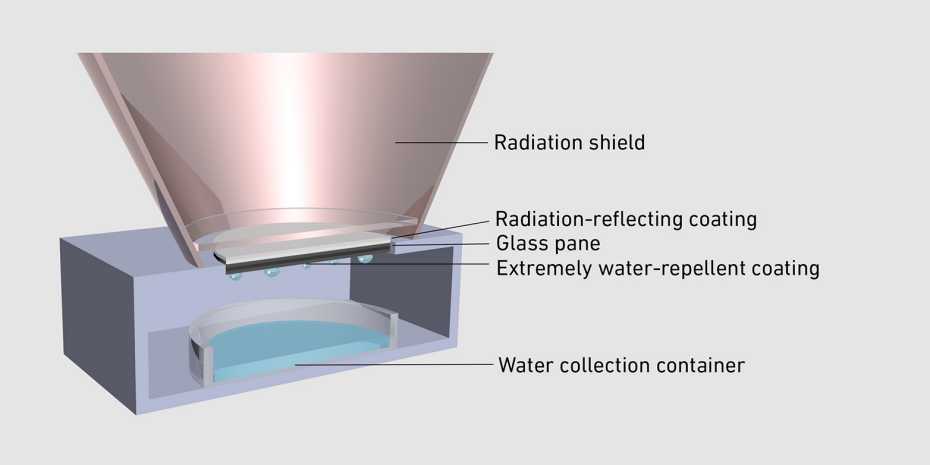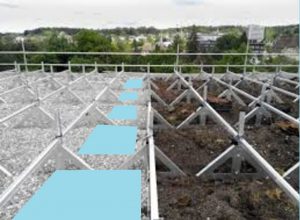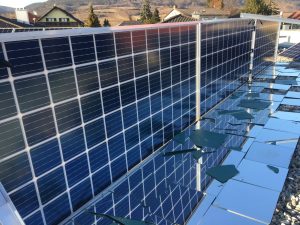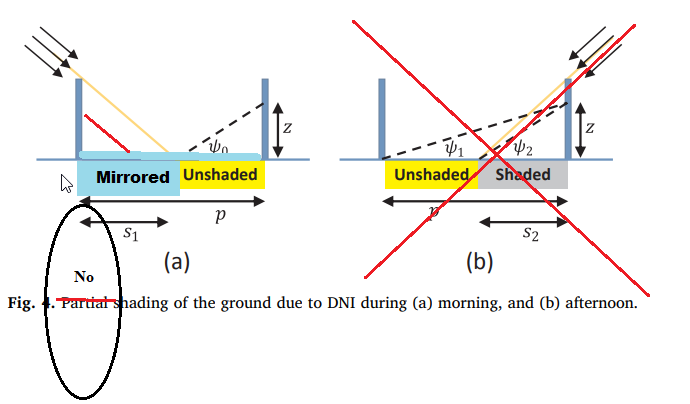 The design options with modules on both sides and green roofs are large and very interesting.
The design options with modules on both sides and green roofs are large and very interesting.
Cities are increasingly having a problem; they get hot too quickly. Green roofs are ideal, as they can actively cool the roof through the evaporation cold. But the question is often whether a white roof is not more efficient due to its good albedo or radiation effect. (Addendum 2021: or mirrored roof surfaces, see MEER Mirror Earth Energy Rebalance)
A Swiss research team now has perhaps the silver medianshown, silver plants and vertically installed PV modules. The silver-colored plants survive droughts better and at the same time they radiate sunlight so well that the bifacial photovoltaic modules get an additional boost.
the lighter the surface, the better the two-sided modules perform via Berliner Woche on March 21, 2019, 7:08 p.m.
At this point I have already presented the advantages of vertically installed modules and mirrors several times. There are now some studies on green roofs that promise 16% more performance due to a better temperature coefficient.
From the Viennese guideline: “In order to increase the reflection of the sun’s rays, the roof is extensively greened with silver-leafy plants such as thyme and sun rose, mixed with white ornamental gravel and an increase in the albedo effect and an increase in performance of 16% are achieved.”
Currently there is also an article by HANS-JOSEF FELL, EEC PRESIDENT AND CO-AUTHOR EEG 2000 in PV magazine , which mentions the Vienna directive for green roofs .
See also my solar weather with temperature coefficient calculator.
Another weighty argument for vertically mounted modules is the pollution see also this important study and my soiling losses pollution online calculator.
Update new Research Conclusion: Mirrors are reducing the Urban Heat Island about 5° C average and the ITT calculate 20% – 30% more through enhanced reflectivity and better Temperature Coefficiency.
Back in the 1800s a British-German astronomer named William Herschel told the world about infrared radiation. Then a few other guys like Josef Stefan and Ludwig Boltzmann figured out the energy exchange between two surfaces had a constant, which found its way into a now famous law called the Stefan-Boltzmann equation.ii A form of this formula can be used to calculate the net exchange of radiative heat (Qrad, Watts) between, for example, the roof of a building and the sky.
Formel 1
Qrad = εσA(∆T4)
Wobei
ε = surface emissivity of the roof
A = roof area, m²
σ = the Stefan-Boltzmann constant (5.6704 × 10 -8 W / m² ∙ K4)
ΔT = temperature differential between the sky and roof, K [Kelvin = ( TºC + 273,15)]
Space is very cold, and we can bring that cold down to Earth by increasing the heat reflectance of an object or an entire region. This can happen through pyramid-like nanostructures or through the smallest glass beads, water droplets or underwater bubbles.
Number of modules to Watt to kWh to EUR calculator
Enter the number of modules and select your photovoltaic modules, and the full solar load in hours and press the Calculate button:
Energy in kilowatt-hours (kWh) of power in watts (W) Calculator and calculation formula.
Enter the number of modules and select your photovoltaic modules, and the full solar load in hours and press the Calculate button:
Temperature Coefficient Calculator
Power in Watts (W) and Temperatur (C°) Calculation:
See also - contact me
- Energy conversion
- Amortisation LCOE
- Power conversion
- Off-Grid Configurator
- kWh to watts calculator
- Watts to kWH calculator
- kW to Ah to kg Calculation




